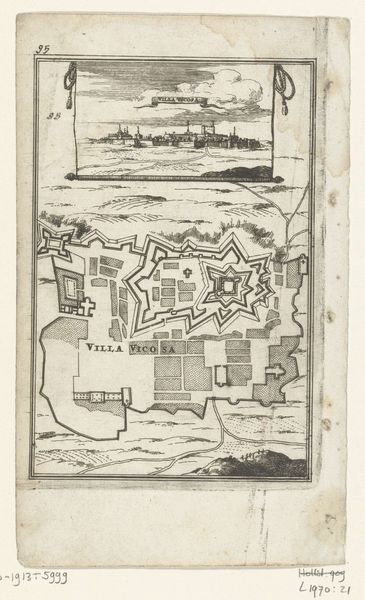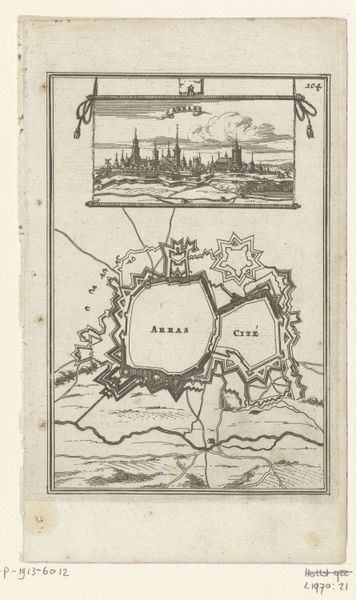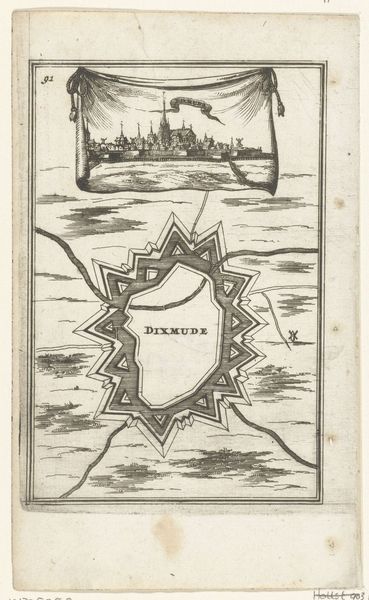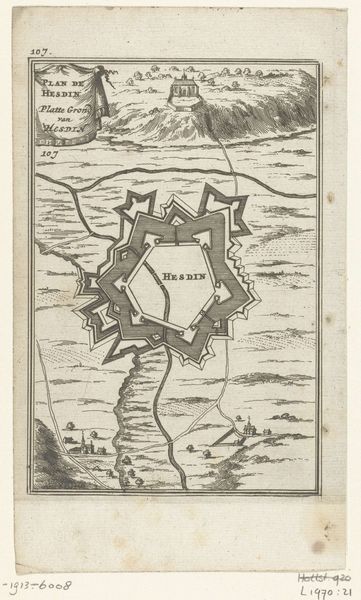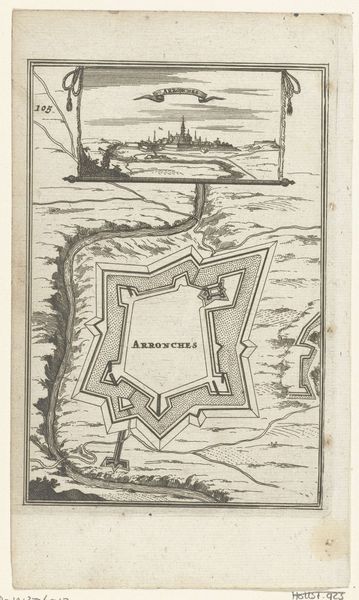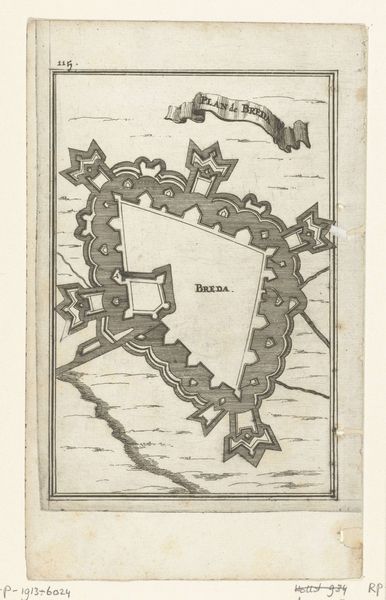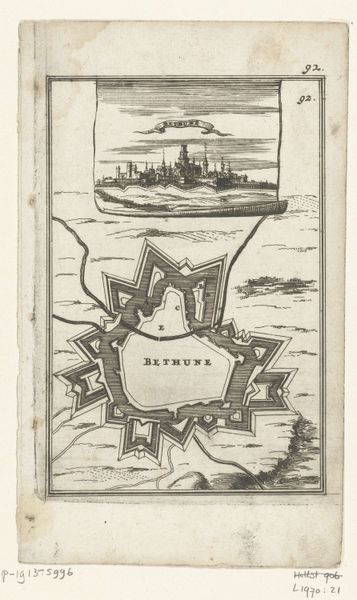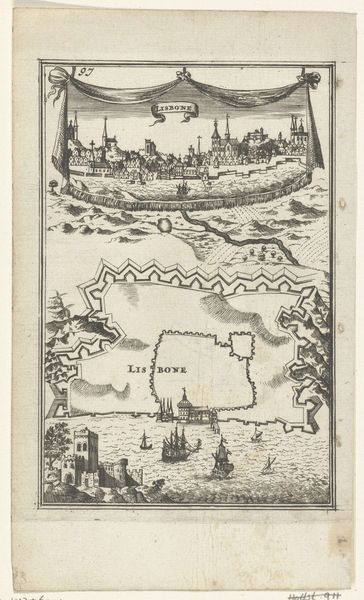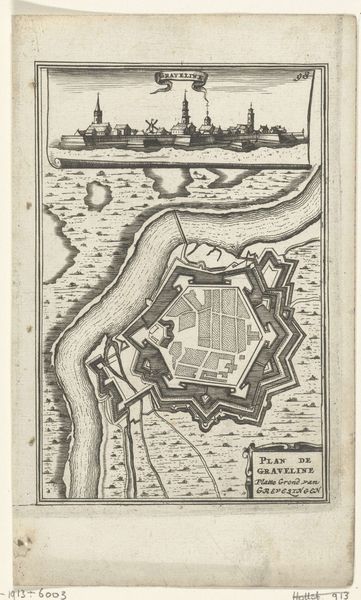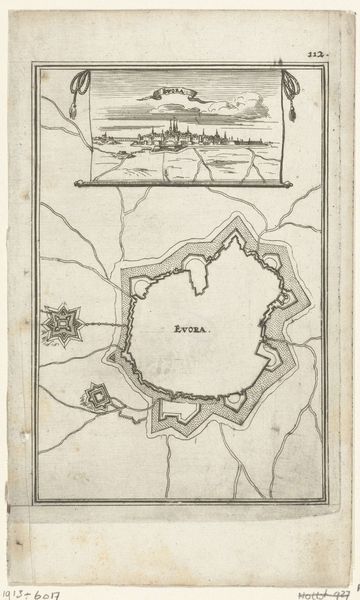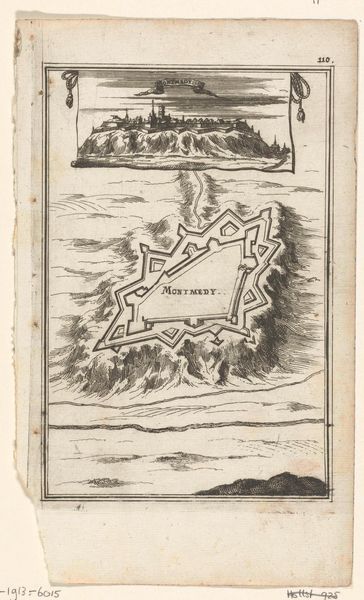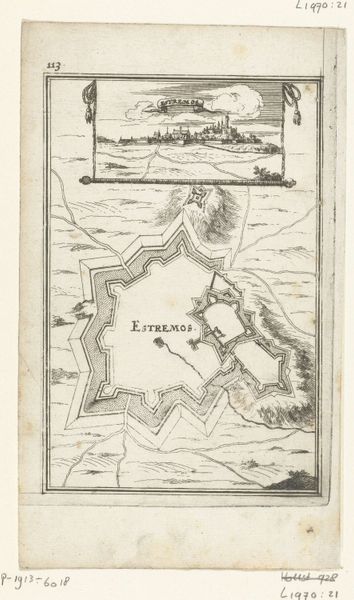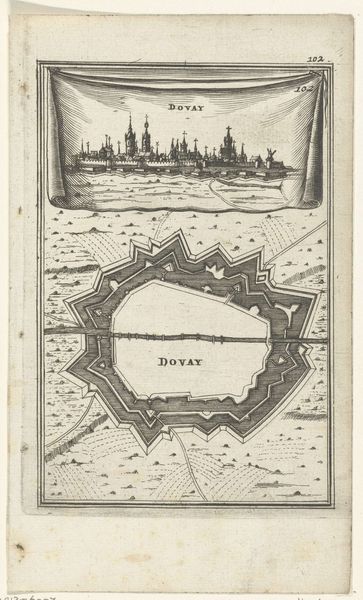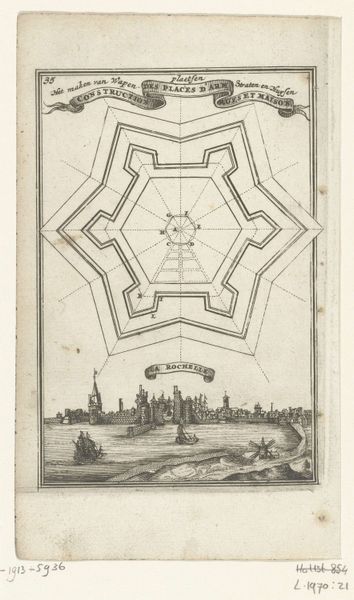
Illustratie voor 'Den Arbeid van Mars' van Allain Manesson Mallet 1672
0:00
0:00
print, engraving
#
baroque
# print
#
old engraving style
#
geometric
#
pen-ink sketch
#
line
#
cityscape
#
history-painting
#
engraving
Dimensions: height 185 mm, width 105 mm
Copyright: Rijks Museum: Open Domain
Curator: I am immediately drawn to the precision of the lines in this print—almost hypnotizing, really. Editor: That initial reaction is quite understandable, I think. What we have here is an engraving from 1672, an illustration created by Romeyn de Hooghe for Allain Manesson Mallet's 'Den Arbeid van Mars' – essentially, 'The Labors of Mars.' Curator: 'The Labors of Mars' sounds…ominous. What am I actually looking at here? It's two pictures, almost, separated by a very ornate frame with what looks like tassels dangling down. Editor: The work features two distinct representations of Furnes, now known as Veurne, a city in Belgium. The upper part shows a kind of bird's-eye view of the cityscape itself, and below, a highly geometric depiction of its fortifications. Consider it in light of the Franco-Dutch War. These images were vital, as control of Veurne would change hands multiple times throughout the conflict. Curator: So, this isn't just decorative—it’s strategic! The angles on that lower part... those must be fortifications, right? Each jagged point jutting outwards? It looks…strangling. Editor: Precisely! This intricate pattern isn't just aesthetic; it is designed to showcase the advanced military engineering of the time. Think about who had access to these images, these advancements, this specific information, and also who was denied it. Curator: I notice how the city itself, up above, appears almost dreamy and undefended, nestled between some fluffy clouds. But then, below, the city’s mirrored in that star-shaped fortress—impenetrable and maybe even suffocating, a weird and sort of beautiful anxiety dream of defense. I guess the Baroque loved these sort of tension. Editor: Absolutely, and there is something to be said about defense itself becoming an industry, or even, a culture. There are few images that reflect this phenomenon more accurately. What feelings remain with you now? Curator: A sense of the distance between idealised city and brutal defence, and I wonder how such tension echoes today. Editor: I think understanding that is critical as well, and in fact it underscores the continuing need to evaluate the social implications and consequences of every technical advancement that’s depicted, then or now.
Comments
No comments
Be the first to comment and join the conversation on the ultimate creative platform.
